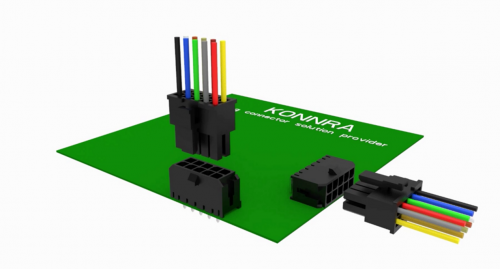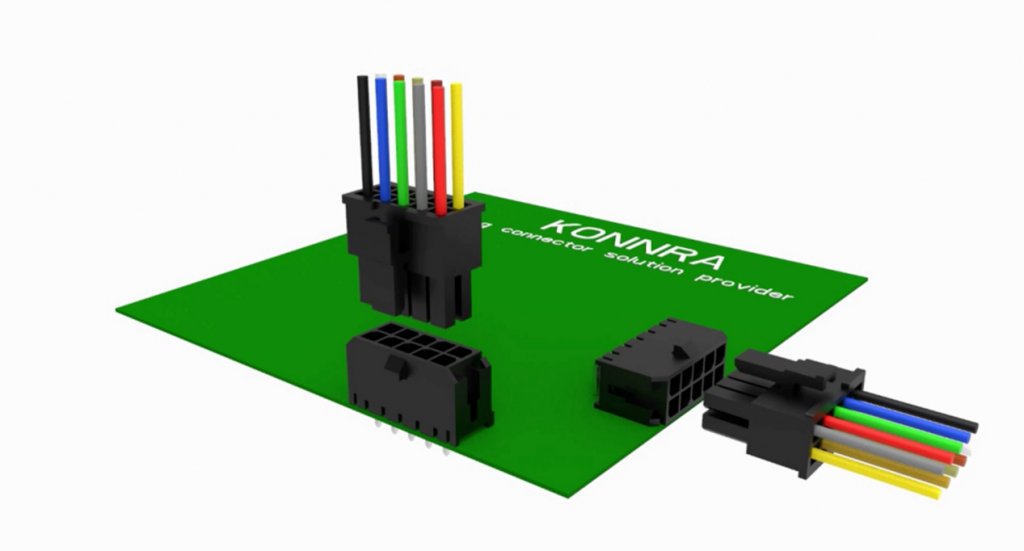I. Scope of application of wire-to-board connectors
Wire-to-board connectors are used to connect one or a group of discrete wires to a printed circuit board (PCB). These connectors are an efficient and cost-effective method for transmitting power and signals to PCBs in automotive, industrial, lighting, and communications products. Commercial electronic devices and home appliances also frequently use wire-to-board connectors.

Since there is no “standard” wire-to-board connector design, KONNRA connectors provide customers with customized connector styles. Depending on the usage scenario , some connectors have low-profile mating for small spaces and various locking mechanisms, such as friction lock, full lock, or quick disconnect. Other connectors have locking levers or snap-on connections to ensure that the wires are securely fixed in the socket. While many connectors are surface-mounted to the circuit board, other connectors have pins that pass through the circuit board and are soldered to the other side.
II. Use of wire-to-board connectors
Wire-to-board connectors are specified by attributes such as shell size, material, number of contacts, stack height (connector height measured from the board), contact length, and number of contact rows. They are also specified by pin pitch, which is the distance between the centers of two conductors. Wire terminations also vary by wire size and number of contacts. For example, connectors that handle large amounts of power typically have crimp contacts that are secured with some kind of tool. Other styles, such as bulk-terminated connectors that accommodate 20 or more wires, may be designed for use in automated soldering systems.
Another recent advancement is a new generation of ultra-compact connectors with a profile less than 1.5 mm that are compatible with automated surface-mount assembly in high-volume manufacturing. To ensure reliability, these miniature connectors often feature gold-plated contacts and strain relief. With today’s wire-to-board connectors available in so many sizes and styles, design engineers have more options than ever before to select the right power and signal transmission system for their end product.










